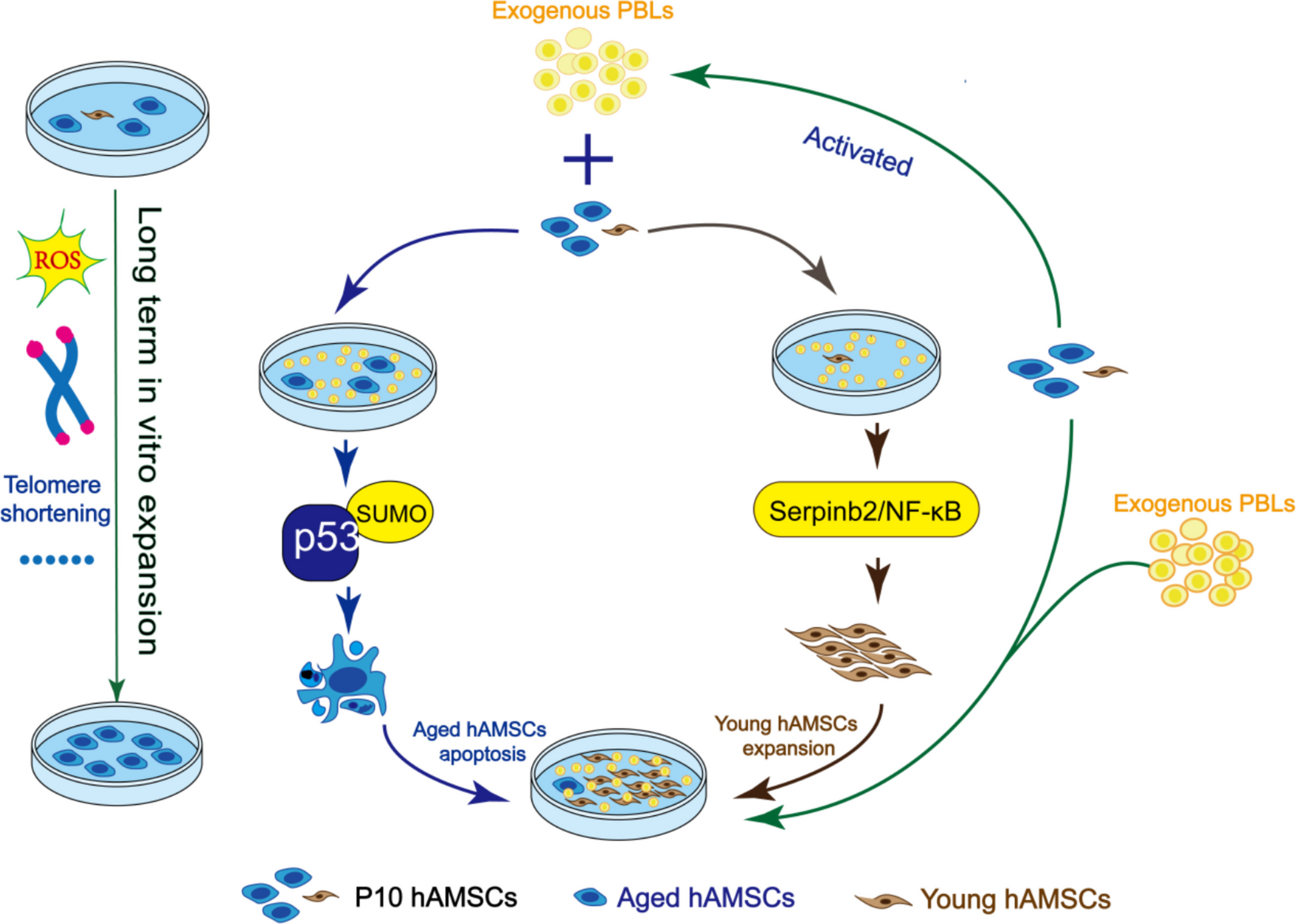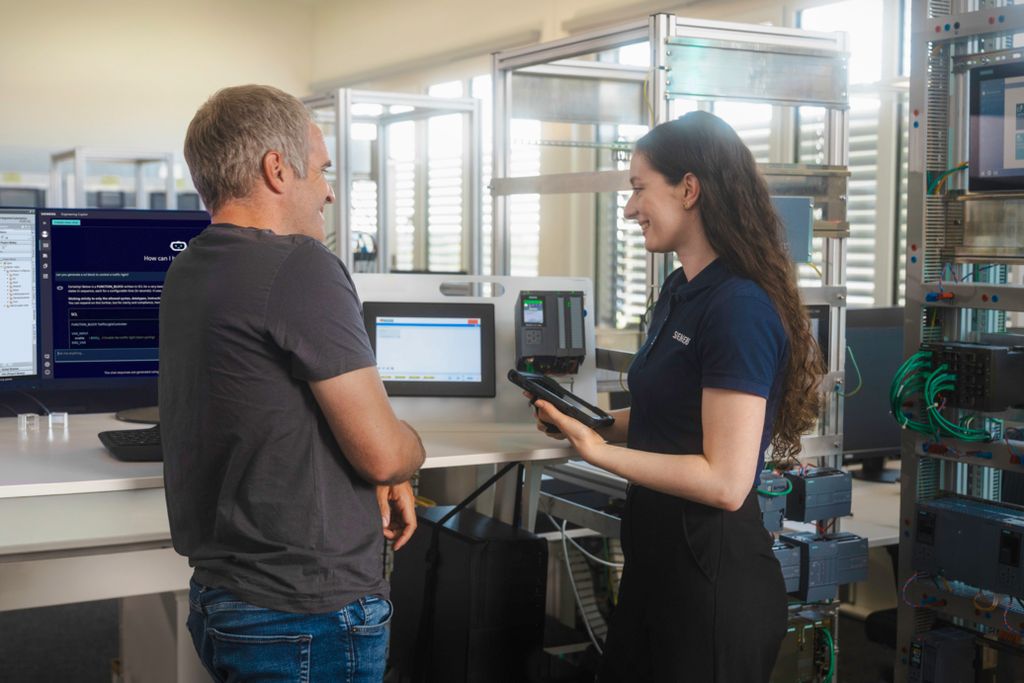- European shares muted as markets turn cautious ahead of US data Reuters
- European stocks open slightly higher, tracking Wall Street rebound CNBC
- DE40: European tech and defence stocks sell-off XTB.com
- European Shares Seen Lower As Investors Await US Data Nasdaq
- European Stocks Set to Drop Following Wall Street Reversal Bloomberg.com
Category: 3. Business
-
European shares muted as markets turn cautious ahead of US data – Reuters
-
COP30: African Development Bank Group Backs Increased Access to Climate Finance for Electricity Grids and Energy Storage – African Development Bank Group
- COP30: African Development Bank Group Backs Increased Access to Climate Finance for Electricity Grids and Energy Storage African Development Bank Group
- Africa secures $57mln for a just energy transition, Mission 300 ZAWYA
- AfDB Secures Nearly €50 Million For African Energy Access At COP30 News Ghana
- COP30: AfDB’s SEFA mobilises nearly EUR50 million in new commitments for just energy transition and Mission 300 CediRates
Continue Reading
-
BASF Coatings sets innovation benchmark with Lean Lab in Wuerzburg
- New laboratory concept drives innovative, customer-centric product development
- Optimized material flow delivers high CO₂ savings
With a new laboratory at its site in Wuerzburg, Germany, BASF Coatings reinforces its position as a pioneer in digitalization, occupational safety, efficiency, and sustainability. The innovative “Lean Lab” concept focuses on developing and producing waterborne basecoats for customers in the European automotive industry.
“The Lean Lab in Wuerzburg is part of our global rollout. With this infrastructure, we are laying the foundation for modern, digitalized, and flexible product development, reaffirming our commitment to driving innovation and sustainability consistently across all regions,” emphasizes Dr. Ralf Otte, Vice President, Global Technology, Automotive OEM Coatings at BASF Coatings. “I am very proud of our project team, who implemented the concept with great commitment within the planned timeframe.”
The Lean Lab concept is currently being introduced at additional BASF Coatings sites worldwide and adapted to specific local requirements. The strategy is based on clear specialization: wet work is handled in the process laboratory, the product laboratory focuses on intensive customer support and continuous product optimization, and the laboratory services organize the provision of raw materials and supplies. Accordingly, work is divided into three areas: process laboratory, product laboratory, and laboratory services.
All workstations are ergonomically designed and equipped with state-of-the-art IT infrastructure. Every process is fully digitally recorded and efficiency oriented. The laboratory’s central location, close to production, enables close interdisciplinary collaboration and ensures rapid implementation of innovations.
The Lean Lab already meets future EU requirements for raw material classification and occupational safety. It drives digitization and efficiency in product development, with a strong focus on sustainability: optimized material flow, direct logistics connections, and centralized space save 25.1 tons of CO₂ annually. Resource utilization is further improved through consumption-based material supply.
Customized laboratory software and an RFID-based warehouse system in the new laboratory ensure transparent processes and automated data collection. Warehouse management, including raw material ordering, is also fully digital. A modern working café fosters creativity, teamwork, and employee well-being.
The BASF Coatings team in Wuerzburg develops and produces waterborne basecoats for automotive OEM customers around the globe. The new laboratory concept further strengthens the site’s role as a key hub and attractive employer in the region.
Continue Reading
-

policy progress, challenges, and pathways forward – CEPS
Gender equality and gender mainstreaming have been established as central priorities within the European Union’s current Framework Programme for Research and Innovation (R&I), Horizon Europe (2021–27). The European Commission has demonstrated a strong commitment to promoting gender equality through measures such as mandatory Gender Equality Plans (GEPs) and the systemic integration of the gender perspective in research. However, despite progress, available data indicate that advancements remain slow, underscoring the need for more robust action by the EU to achieve meaningful equality in this field.
Drawing on existing literature and data, this paper introduces a new theoretical framework for analysing the integration of gender equality and gender mainstreaming in Horizon Europe across three interrelated dimensions: structural, epistemic and substantive. It conceptualises gender equality in R&I as a circle, where progress in one dimension can mutually reinforce advancement in the others. The paper further identifies emerging themes and priority areas for the next Framework Programme, addressing persistent challenges in gender equality, and proposes seven targeted policy actions.
Implementing these measures would enhance the EU’s capacity to mainstream gender in research, strengthen its leadership in promoting gender equality, and its position as a global example for gender-responsive R&I.
To read all publications in the ‘EU R&I and Health Policy’ series, please click here.
Continue Reading
-

Rejuvenation of mesenchymal stem cells by human peripheral blood lymphocytes | BMC Biology
Yamanaka S. Pluripotent stem cell-based cell therapy-promise and challenges. Cell Stem Cell. 2020;27(4):523–31.
Hoang DM, Pham PT, Bach TQ, Ngo ATL, Nguyen QT, Phan TTK, et al. Stem cell-based therapy for human diseases. Signal Transduct Target Ther. 2022;7(1):272.
Galipeau J, Sensébé L. Mesenchymal stromal cells: clinical challenges and therapeutic opportunities. Cell Stem Cell. 2018;22(6):824–33.
Kabat M, Bobkov I, Kumar S, Grumet M. Trends in mesenchymal stem cell clinical trials 2004-2018: is efficacy optimal in a narrow dose range? Stem Cells Transl Med. 2020;9(1):17–27. https://doi.org/10.1002/sctm.19-0202.
Yin JQ, Zhu J, Ankrum JA. Manufacturing of primed mesenchymal stromal cells for therapy. Nat Biomed Eng. 2019;3(2):90–104.
Taherian Fard A, Leeson HC, Aguado J, Pietrogrande G, Power D, Gómez-Inclán C, et al. Deconstructing heterogeneity of replicative senescence in human mesenchymal stem cells at single cell resolution. Geroscience. 2024;46(1):999–1015. https://doi.org/10.1007/s11357-023-00829-y.
Miclau K, Hambright WS, Huard J, Stoddart MJ, Bahney CS. Cellular expansion of MSCs: shifting the regenerative potential. Aging Cell. 2023;22(1):e13759. https://doi.org/10.1111/acel.13759.
Huang Y, Li Q, Zhang K, Hu M, Wang Y, Du L, et al. Single cell transcriptomic analysis of human mesenchymal stem cells reveals limited heterogeneity. Cell Death Dis. 2019;10(5):368.
López-Otín C, Blasco MA, Partridge L, Serrano M, Kroemer G. Hallmarks of aging: an expanding universe. Cell. 2023;186(2):243–78.
Hu M, Xing L, Zhang L, Liu F, Wang S, Xie Y, et al. NAP1L2 drives mesenchymal stem cell senescence and suppresses osteogenic differentiation. Aging Cell. 2022;21(2):e13551. https://doi.org/10.1111/acel.13551.
Weng Z, Wang Y, Ouchi T, Liu H, Qiao X, Wu C, et al. Mesenchymal stem/stromal cell senescence: hallmarks, mechanisms, and combating strategies. Stem Cells Transl Med. 2022;11(4):356–71.
Weber L, Lee BS, Imboden S, Hsieh CJ, Lin NYC. Phenotyping senescent mesenchymal stromal cells using AI image translation. Curr Res Biotechnol. 2023;5:100120. https://doi.org/10.1016/j.crbiot.2023.100120.
Li X, Luo X, He Y, Xu K, Ding Y, Gao P, et al. Micronano titanium accelerates mesenchymal stem cells aging through the activation of senescence-associated secretory phenotype. ACS Nano. 2023;17(22):22885–900.
Brunet A, Goodell MA, Rando TA. Ageing and rejuvenation of tissue stem cells and their niches. Nat Rev Mol Cell Biol. 2023;24:45–62.
Yoshioka N, Gros E, Li HR, Kumar S, Deacon DC, Maron C, et al. Efficient generation of human iPSCs by a synthetic self-replicative RNA. Cell Stem Cell. 2013;13(2):246–54.
Jiao H, Walczak BE, Lee MS, Lemieux ME, Li WJ. GATA6 regulates aging of human mesenchymal stem/stromal cells. Stem Cells. 2021;39(1):62–77.
Xu Q, Fu Q, Li Z, Liu H, Wang Y, Lin X, et al. The flavonoid procyanidin C1 has senotherapeutic activity and increases lifespan in mice. Nat Metab. 2021;3(12):1706–26.
Zhang C, Han X, Liu J, Chen L, Lei Y, Chen K, et al. Single-cell transcriptomic analysis reveals the cellular heterogeneity of mesenchymal stem cells. Genomics Proteomics Bioinformatics. 2022;20(1):70–86.
Bussian TJ, Aziz A, Meyer CF, Swenson BL, van Deursen JM, Baker DJ. Clearance of senescent glial cells prevents tau-dependent pathology and cognitive decline. Nature. 2018;562(7728):578–82.
Srinivasan A, Sathiyanathan P, Yin L, Liu TM, Lam A, Ravikumar M, et al. Strategies to enhance immunomodulatory properties and reduce heterogeneity in mesenchymal stromal cells during ex vivo expansion. Cytotherapy. 2022;24(5):456–72.
Ross EA, Turner LA, Donnelly H, Saeed A, Tsimbouri MP, Burgess KV, et al. Nanotopography reveals metabolites that maintain the immunomodulatory phenotype of mesenchymal stromal cells. Nat Commun. 2023;14(1):753.
Yuan H, Xu Y, Luo Y, Zhang JR, Zhu XX, Xiao JH. Ganoderic acid D prevents oxidative stress-induced senescence by targeting 14-3-3ε to activate CaM/CaMKII/NRF2 signaling pathway in mesenchymal stem cells. Aging Cell. 2022;21(9):e13686. https://doi.org/10.1111/acel.13686.
Xu Y, Yuan H, Luo Y, Zhao YJ, Xiao JH. Ganoderic acid D protects human amniotic mesenchymal stem cells against oxidative stress-induced senescence through the PERK/NRF2 signaling pathway. Oxid Med Cell Longev. 2020;2020:8291413. https://doi.org/10.1155/2020/8291413.
Wong PF, Dharmani M, Ramasamy TS. Senotherapeutics for mesenchymal stem cell senescence and rejuvenation. Drug Discov Today. 2023;28(1):103424. https://doi.org/10.1016/j.drudis.2022.103424.
Chaib S, Tchkonia T, Kirkland JL. Cellular senescence and senolytics: the path to the clinic. Nat Med. 2022;28:1556–68.
Ovadya Y, Landsberger T, Leins H, Vadai E, Gal H, Biran A, et al. Impaired immune surveillance accelerates accumulation of senescent cells and aging. Nat Commun. 2018;9(1):5435.
Chelyapov N, Nguyen TT, Gonzalez R. Autologous NK cells propagated and activated ex vivo decrease senescence markers in human PBMCs. Biochem Biophys Rep. 2022;32:101380. https://doi.org/10.1016/j.bbrep.2022.101380.
Tang X, Deng B, Zang A, He X, Zhou Y, Wang D, et al. Characterization of age-related immune features after autologous NK cell infusion: protocol for an open-label and randomized controlled trial. Front Immunol. 2022;13:940577. https://doi.org/10.3389/fimmu.2022.940577.
Bayik D, Lathia JD. Cancer stem cell-immune cell crosstalk in tumour progression. Nat Rev Cancer. 2021;21(8):526–36.
Bobyleva P, Gornostaeva A, Andreeva E, Ezdakova M, Gogiya B, Buravkova L. Reciprocal modulation of cell functions upon direct interaction of adipose mesenchymal stromal and activated immune cells. Cell Biochem Funct. 2019;37(4):228–38.
Valencic E, Loganes C, Cesana S, Piscianz E, Gaipa G, Biagi E, et al. Inhibition of mesenchymal stromal cells by pre-activated lymphocytes and their culture media. Stem Cell Res Ther. 2014;5(1):3.
Bobyleva PI, Andreeva ER, Gornostaeva AN, Buravkova LB. Tissue-related hypoxia attenuates proinflammatory effects of allogeneic PBMCs on adipose-derived stromal cells in vitro. Stem Cells Int. 2016;2016(1):4726267. https://doi.org/10.1155/2016/4726267.
Al-Azab M, Safi M, Idiiatullina E, Al-Shaebi F, Zaky MY. Aging of mesenchymal stem cell: machinery, markers, and strategies of fighting. Cell Mol Biol Lett. 2022;27(1):69.
Olsen Saraiva Camara N, Lepique AP, Basso AS. Lymphocyte differentiation and effector functions. Clin Dev Immunol. 2012;2012:510603.
Van der Meide PH, Schellekens H. Cytokines and the immune response. Biotherapy. 1996;8(3–4):243–9. https://doi.org/10.1007/BF01877210.
Green DR, Kroemer G. Cytoplasmic functions of the tumour suppressor p53. Nature. 2009;458:1127–30.
Rodríguez JA. Interplay between nuclear transport and ubiquitin/SUMO modifications in the regulation of cancer-related proteins. Semin Cancer Biol. 2014;27:11–9.
Castrogiovanni C, Waterschoot B, De Backer O, Dumont P. Serine 392 phosphorylation modulates p53 mitochondrial translocation and transcription-independent apoptosis. Cell Death Differ. 2018;25(1):190–203.
Chang HM, Yeh ETH. SUMO: from bench to bedside. Physiol Rev. 2020;100(4):1599–619.
Burczynski ME, Peterson RL, Twine NC, Zuberek KA, Brodeur BJ, Casciotti L, et al. Molecular classification of Crohn’s disease and ulcerative colitis patients using transcriptional profiles in peripheral blood mononuclear cells. J Mol Diagn. 2006;8(1):51–61.
Delhase M, Kim SY, Lee H, Naiki-Ito A, Chen Y, Ahn ER, et al. TANK-binding kinase 1 (TBK1) controls cell survival through PAI-2/serpinB2 and transglutaminase 2. Proc Natl Acad Sci U S A. 2012;109(4):E177-86.
Demaria M, Ohtani N, Youssef SA, Rodier F, Toussaint W, Mitchell JR, et al. An essential role for senescent cells in optimal wound healing through secretion of PDGF-AA. Dev Cell. 2014;31(6):722–33.
Reyes NS, Krasilnikov M, Allen NC, Lee JY, Hyams B, Zhou M, et al. Sentinel p16INK4a+ cells in the basement membrane form a reparative niche in the lung. Science. 2022;378(6616):192–201.
Prata LGPL, Ovsyannikova IG, Tchkonia T, Kirkland JL. Senescent cell clearance by the immune system: emerging therapeutic opportunities. Semin Immunol. 2018;40:101275. https://doi.org/10.1016/j.smim.2019.04.003.
Carvalho AÉS, Sousa MRR, Alencar-Silva T, Carvalho JL, Saldanha-Araujo F. Mesenchymal stem cells immunomodulation: the road to IFN-γ licensing and the path ahead. Cytokine Growth Factor Rev. 2019;47:32–42.
Mabuchi Y, Okawara C, Méndez-Ferrer S, Akazawa C. Cellular heterogeneity of mesenchymal stem/stromal cells in the bone marrow. Front Cell Dev Biol. 2021;9:689366. https://doi.org/10.3389/fcell.2021.689366.
Marin I, Boix O, Garcia-Garijo A, Sirois I, Caballe A, Zarzuela E, et al. Cellular senescence is immunogenic and promotes antitumor immunity. Cancer Discov. 2023;13(2):410–31.
Baar MP, Brandt RMC, Putavet DA, Klein JDD, Derks KWJ, Bourgeois BRM, et al. Targeted apoptosis of senescent cells restores tissue homeostasis in response to chemotoxicity and aging. Cell. 2017;169(1):132-147.e16.
Pereira BI, Devine OP, Vukmanovic-Stejic M, Chambers ES, Subramanian P, Patel N, et al. Senescent cells evade immune clearance via HLA-E-mediated NK and CD8+ T cell inhibition. Nat Commun. 2019;10(1):2387.
Wang TW, Johmura Y, Suzuki N, Omori S, Migita T, Yamaguchi K, et al. Blocking PD-L1-PD-1 improves senescence surveillance and ageing phenotypes. Nature. 2022;611(7935):358–64.
Onder TT, Kara N, Cherry A, Sinha AU, Zhu N, Bernt KM, et al. Chromatin-modifying enzymes as modulators of reprogramming. Nature. 2012;483(7391):598–602.
Naik S, Larsen SB, Gomez NC, Alaverdyan K, Sendoel A, Yuan S, et al. Inflammatory memory sensitizes skin epithelial stem cells to tissue damage. Nature. 2017;550(7677):475–80.
Gonzales KAU, Polak L, Matos I, Tierney MT, Gola A, Wong E, et al. Stem cells expand potency and alter tissue fitness by accumulating diverse epigenetic memories. Science. 2021;374(6571):eabh2444.
Lanna A, Vaz B, D’Ambra C, Valvo S, Vuotto C, Chiurchiù V, et al. An intercellular transfer of telomeres rescues T cells from senescence and promotes long-term immunological memory. Nat Cell Biol. 2022;24(10):1461–74.
Mahmoudi S, Mancini E, Xu L, Moore A, Jahanbani F, Hebestreit K, et al. Heterogeneity in old fibroblasts is linked to variability in reprogramming and wound healing. Nature. 2019;574(7779):553–8.
Patel PL, Suram A, Mirani N, Bischof O, Herbig U. Derepression of hTERT gene expression promotes escape from oncogene-induced cellular senescence. Proc Natl Acad Sci U S A. 2016;113:E5024–33.
Galanos P, Vougas K, Walter D, Polyzos A, Maya-Mendoza A, Haagensen EJ, et al. Chronic p53-independent p21 expression causes genomic instability by deregulating replication licensing. Nat Cell Biol. 2016;18(7):777–89.
Lapasset L, Milhavet O, Prieur A, Besnard E, Babled A, Aït-Hamou N, et al. Rejuvenating senescent and centenarian human cells by reprogramming through the pluripotent state. Genes Dev. 2011;25(21):2248–53.
Li W, Liu Q, Shi J, Xu X, Xu J. The role of TNF-α in the fate regulation and functional reprogramming of mesenchymal stem cells in an inflammatory microenvironment. Front Immunol. 2023;14:1074863.
Magne B, Dedier M, Nivet M, Coulomb B, Banzet S, Lataillade JJ, et al. IL-1β-primed mesenchymal stromal cells improve epidermal substitute engraftment and wound healing via matrix metalloproteinases and transforming growth factor-β1. J Invest Dermatol. 2020;140(3):688-698.e21.
Renner L, von Soosten D, Sipka A, Döll S, Beineke A, Schuberth HJ, et al. Effect of conjugated linoleic acid on proliferation and cytokine expression of bovine peripheral blood mononuclear cells and splenocytes ex vivo. Arch Anim Nutr. 2012;66(2):73–85.
Dagur PK, McCoy JP Jr. Collection, storage, and preparation of human blood cells. Curr Protoc Cytom. 2015;73:5.1.1-5.1.16.
Fu YP, Yuan H, Xu Y, Liu RM, Luo Y, Xiao JH. Protective effects of Ligularia fischeri root extracts against ulcerative colitis in mice through activation of Bcl-2/Bax signalings. Phytomedicine. 2022;99:154006.
Wang AT, Zhang QF, Wang NX, Yu CY, Liu RM, Luo Y, et al. Cocktail of hyaluronic acid and human amniotic mesenchymal cells effectively repairs cartilage injuries in sodium iodoacetate-induced osteoarthritis rats. Front Bioeng Biotechnol. 2020;8:87.
Luo Y, Zhu XX, Le QR, Chen WT, Xu Y, Chen XM, Yuan H, Yang X, Xu JW, Zhong JJ, Xiao JH. Rejuvenation of mesenchymal stem cells by human peripheral blood lymphocytes-a dual-mechanism for targeting senescent cell clearance and promoting cell proliferation in a coculture system. [RNA-Seq]. NCBI, GEO. 2025. https://www.ncbi.nlm.nih.gov/geo/query/acc.cgi?acc=GSE307002.
Luo Y, Zhu XX, Le QR, Chen WT, Xu Y, Chen XM, Yuan H, Yang X, Xu JW, Zhong JJ, Xiao JH. Rejuvenation of mesenchymal stem cells by human peripheral blood lymphocytes-a dual-mechanism for targeting senescent cell clearance and promoting cell proliferation in a coculture system. [RNA-Seq]. NCBI, GEO. 2025. https://www.ncbi.nlm.nih.gov/geo/query/acc.cgi?acc=GSE307003.
Luo Y, Zhu XX, Le QR, Chen WT, Xu Y, Chen XM, Yuan H, Yang X, Xu JW, Zhong JJ, Xiao JH. Rejuvenation of mesenchymal stem cells by human peripheral blood lymphocytes-a dual-mechanism for targeting senescent cell clearance and promoting cell proliferation in a coculture system. ProteomeXchange. 2025. Accession: PXD066147, https://proteomecentral.proteomexchange.org/cgi/GetDataset?ID=PXD066147.
Continue Reading
-

Lower Costs, Greater Efficiency: Adami Trasporti Relies on Continental Tires
The family-owned company Adami Trasporti, which now has 280 employees, has specialized in food transport for more than four generations. The fleet consists of modern tanks and tank containers designed for the transport of liquid food products. “With one of the most modern truck and trailer fleets in Europe, we guarantee our customers the highest quality standards and maximum service flexibility,” says Stefano Adami. The 200 vehicles operate from Verona and three other strategic locations in Castelmassa, Italy; Bratislava, Slovakia; and Beilngries, Germany – along the European and national north-south and east-west transport axes. “We transport liquids such as fruit juices, glucose, wine, milk, chocolate, and cooking oil. Everything is always done in compliance with the highest food safety standards,” says the freight forwarder.
Continue Reading
-

Siemens showcases the future of autonomous production at SPS 2025 | Press | Company
[{“nid”:0,”name”:”Products & Solutions”,”tid”:0,”url_str”:”https://www.siemens.com/global/en/products.html”,”alias”:”https://www.siemens.com/global/en/products.html”,”level”:1,”image”:{“fid”:false,”furl”:””},”options”:{“menu_icon”:{“fid”:false},”external”:true},”depth”:1,”parent”:false,”children”:[]},{“nid”:0,”name”:”Industries”,”tid”:1,”url_str”:”https://xcelerator.siemens.com/global/en/industries.html”,”alias”:”https://xcelerator.siemens.com/global/en/industries.html”,”level”:1,”image”:{“fid”:false,”furl”:””},”options”:{“menu_icon”:{“fid”:false},”external”:true},”depth”:1,”parent”:false,”children”:[]},{“nid”:0,”name”:”Company”,”tid”:2,”url_str”:”https://www.siemens.com/global/en/company.html”,”alias”:”https://www.siemens.com/global/en/company.html”,”level”:1,”image”:{“fid”:false,”furl”:””},”options”:{“menu_icon”:{“fid”:false},”external”:true},”depth”:1,”parent”:false,”children”:[]}]
Continue Reading
-

Aluminum giants hit major milestone with low-carbon…
Around the world, smelters use massive amounts of electricity — often generated by fossil fuels — to turn raw materials into aluminum. As more carbon-free energy comes onto the grid, these power-hungry facilities will get progressively cleaner. But smelters will never be entirely emissions-free until producers can solve a much trickier technical problem.
That’s because modern aluminum plants rely on a 19th-century process that uses big blocks of carbon, which account for almost one-sixth of the greenhouse gases associated with producing new aluminum globally. Replacing the blocks is crucial to decarbonizing this key industrial process.
Now the industry may be one step closer to reaching that goal.
Earlier this month, the Canadian firm Elysis said it hit a major milestone when it deployed an industrial-size, carbon-free anode inside an existing smelter in Alma, Quebec. Elysis is a joint venture of the U.S. aluminum giant Alcoa and global mining company Rio Tinto, both of which produce aluminum in the Canadian province.
“This is really a first for the aluminum industry, and a worldwide first as well,” François Perras, president and CEO of Elysis, told Canary Media.
Elysis installed its “inert,” or chemically inactive, anode technology in a 450-kiloampere (kA) cell, the same amount of electric current used in many large, modern smelters. The full-scale prototype is a significant step up from the company’s 100 kA pilot unit, which has produced low-carbon aluminum used in certain Apple laptops and iPhones, Michelob Ultra beer cans, and the wheels for Audi’s electric sports car.
Elysis launched in 2018 and has raised over 650 million Canadian dollars ($460 million) in investment for the effort, including from the governments of Canada and Quebec. The 450 kA cell will undergo several more years of testing as the company works to measure and validate how the larger unit performs inside a commercial smelter.
Rio Tinto, meanwhile, has already licensed the inert-anode technology from Elysis. The manufacturer plans to build a demonstration plant with 10 of the 100 kA cells at its existing Arvida smelter in Quebec, possibly by 2027, through a joint venture with the provincial government.
“We’re trying to replace a process that has been used for close to 140 years,” Perras said of the initiatives.
Elysis’ 450-kiloampere cell operates inside Rio Tinto’s existing smelter in Quebec. (Elysis) Smelting involves dissolving powdery alumina in a molten salt, which is heated to over 1,700 degrees Fahrenheit. Large carbon anodes are lowered into the highly corrosive bath, and electrical currents run through the entire structure. Aluminum then deposits at the bottom as oxygen combines with carbon in the blocks, creating CO2 as a by-product. It also releases perfluorochemicals (PFCs) — long-lasting greenhouse gases — as well as harmful sulfur dioxide pollution.
The anodes themselves are made using petroleum coke, a rocklike by-product of oil refining.
The Hall–Héroult process was revolutionary, but it is extremely energy-intensive. Most of the emissions associated with producing aluminum are tied to electricity production. In the United States, more than 70% of CO2 pollution from six operating smelters came from the power supply in 2021, according to the Environmental Integrity Project. (The U.S. now has four smelters left, three of which rely on fossil-fuel power.)
Another 20% of U.S. smelters’ carbon emissions were directly from the electrochemical process, the EIP study found. Smelting was also responsible for virtually all the PFCs reported by metal producers to the Environmental Protection Agency that year.
The solution to reducing electricity-related emissions is relatively straightforward: Deploy vast amounts of wind, solar, battery storage, and other clean energy sources. But completely eliminating emissions from the smelting process requires redesigning how the anodes and cells work — and researchers are only just beginning to develop alternatives.
Continue Reading
-

AECOM to deliver HKIA Dongguan Logistics Park, setting new benchmark in logistics infrastructure and driving economic growth in the Greater Bay Area
HONG KONG (November 25, 2025) — AECOM, the world’s trusted infrastructure consulting firm, today announced its appointment by the Hong Kong-Dongguan Sea-Air Intermodal Transshipment Logistics Park Management (Dongguan) Limited, a wholly-owned subsidiary of Airport Authority Hong Kong (AAHK), to deliver the HKIA Dongguan Logistics Park (The Park). This strategic initiative will establish a direct link between Hong Kong International Airport (HKIA) and Dongguan, a key manufacturing hub in the Chinese Mainland. By combining Hong Kong’s robust air cargo ecosystem and Dongguan’s export-driven manufacturing strength, this project aims to unlock new efficiencies and drive significant economic growth across the Greater Bay Area (GBA).
As the lead consultant for Phase 1 of the Park, AECOM is overseeing the design, contract and construction management of the key infrastructure, building on the team’s previous end-to-end services, spanning master planning, design, and technical studies. This initial phase includes an air cargo terminal complex, a barge terminal, freight forwarder warehouses, and highly-automated facilities. A wide array of advanced digital technologies are introduced, including an intelligent guided vehicle (IGV) system and customized containers. This integrated approach sets a new benchmark for logistics infrastructure in the region
The Park will be the world’s first sea-air intermodal transshipment hub. Export cargo will be screened, palletized, and airline-approved in Dongguan to comply with Hong Kong’s air cargo security requirements. Dedicated vessels will then transport the cargo directly to the airside of HKIA for onward transshipment to global destinations. Once operational, the Park is expected to handle up to one million tons of cargo annually, further strengthening HKIA’s status as a leading global logistics hub.
“We are leveraging our multidisciplinary expertise and cross-regional capabilities to deliver this first-of-its-kind logistics park,” said Ian Chung, Regional Chief Executive, Asia. “Featuring an innovative operational model and a state-of-the-art autonomous cargo handling system, the project sets a new benchmark for logistics infrastructure and efficiency — significantly enhancing the economic and physical connectivity between the GBA and global markets.”
“Our deep understanding of the cross-border market enables us to meet client needs with precision, setting us apart in the industry,” added Kelvin Law, Vice President, Strategic Planning, Urbanism+Planning, Asia. “From master planning to completion, we deliver a future-ready, one-stop solution that brings this iconic GBA project to life.”
AECOM brings deep expertise in delivering complex logistics infrastructure across the GBA, with a proven track record that includes the Cainiao Smart Gateway — a cutting-edge e-commerce logistics hub at HKIA — and the Kwai Chung Cold Storage Logistics Centre, a multi-story, multi-tenant facility with integrated office and public parking. These landmark projects reinforce AECOM’s position as the partner of choice in shaping the future of logistics across the GBA.
About AECOM
AECOM is the global infrastructure leader, committed to delivering a better world. As a trusted professional services firm powered by deep technical abilities, we solve our clients’ complex challenges in water, environment, energy, transportation and buildings. Our teams partner with public- and private-sector clients to create innovative, sustainable and resilient solutions throughout the project lifecycle – from advisory, planning, design and engineering to program and construction management. AECOM is a Fortune 500 firm that had revenue of US$16.1 billion in fiscal year 2024. Learn more at AECOM.
Media Contact:
Daisy Lam
Marketing & Communications Lead – Asia Business Lines, Hong Kong, Taiwan
Daisy.Lam@aecom.comContinue Reading
-

Assessing Hermès After 2025 Price Dip and Expansion Into New International Markets
-
If you have ever wondered whether Hermès International Société en commandite par actions is truly worth its luxury stock price, you are in the right place for a fresh look at its value.
-
While the stock is up a stunning 168.5% over the past five years and 3.0% over the last twelve months, it has dipped by 3.8% this past month and is down 8.3% year-to-date. This points to some shifting market sentiment.
-
Recent headlines have highlighted Hermès’ successful expansion into new international markets and continued product innovation, both contributing to investor optimism. However, the company now faces questions about whether current pricing fully reflects future growth as analysts and market watchers debate its next steps.
-
On our valuation checks, Hermès International Société en commandite par actions scores 0 out of 6 for being undervalued. This makes for a compelling case to dig deeper. Let’s break down how different valuation approaches view Hermès, and stick around for a smarter way to gauge value at the end of this article.
Hermès International Société en commandite par actions scores just 0/6 on our valuation checks. See what other red flags we found in the full valuation breakdown.
The Discounted Cash Flow (DCF) model estimates what a company is truly worth by projecting its future cash flows and discounting them back to their present value. For Hermès International Société en commandite par actions, this approach uses recent financial performance and analyst forecasts to estimate future value.
Currently, Hermès generates trailing twelve month free cash flow of approximately €4.34 billion. Analyst estimates project continued growth, with free cash flow expected to rise to around €5.19 billion by 2027. Over the following years, projections from Simply Wall St extrapolate a steady annual increase, reaching about €6.78 billion by 2035. These growth estimates are crucial in shaping the DCF outcome.
The DCF model arrives at an intrinsic value of €897.10 per share for Hermès. In comparison, the current market price is over 135% higher than this estimated fair value, indicating the stock is significantly overvalued based on these cash flow projections.
Result: OVERVALUED
Our Discounted Cash Flow (DCF) analysis suggests Hermès International Société en commandite par actions may be overvalued by 135.2%. Discover 921 undervalued stocks or create your own screener to find better value opportunities.
RMS Discounted Cash Flow as at Nov 2025 Head to the Valuation section of our Company Report for more details on how we arrive at this Fair Value for Hermès International Société en commandite par actions.
Continue Reading
-